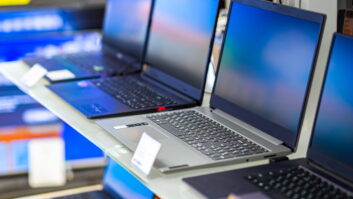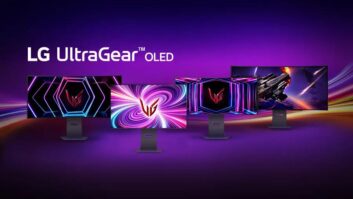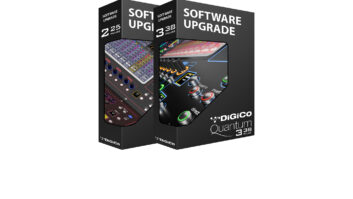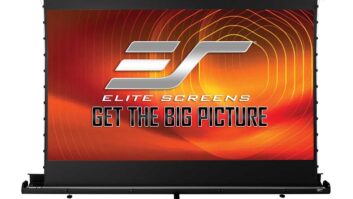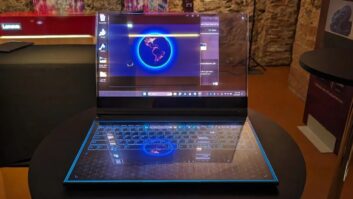This year’s National Association Of Broadcasters convention in Las Vegas contrasted sharply from the previous two editions in its lack of a clear message about digital television.
In 1997 show attendees and exhibitors were buzzing about the newly minted U.S. digital television standard and the possibilities of buying and selling lots of new equipment. Last year, the major broadcast networks used NAB to stake out their positions in the DTV format wars, as ABC and Fox touted the benefits of progressive-scan formats, and CBS and NBC pledged to stick with the more established 1,080-line interlace high-definition format.
This year, instead of a message there was a question: HDTV, interactive content, or both?
While there was certainly a lot of new HDTV professional equipment on the show floor, most exhibitors were also hawking new interactive applications that broadcasters could offer through their digital spectrum.
Companies ranging from such computer industry giants as Intel and Microsoft to broadcast equipment stalwarts including Harris and Panasonic were all demonstrating ways to deliver web-like content to personal computers (and perhaps televisions) that are able to decode digital TV signals. And it appears that some broadcasters are ready to buy into that vision.
NBC, for example, made big news at last year’s NAB by announcing a deal with Sony to create a high-definition production facility for The Tonight Show with Jay Leno. NBC was at Sony’s NAB ’99 press conference to announce the completion of the HDTV facility in Burbank and to give a sneak preview of Tonight in HDTV (the talk show officially launched in HDTV on April 26).
However, NBC’s big NAB news wasn’t HDTV, but a partnership with Intel to deliver enhanced standard-definition broadcasts through its digital spectrum.
The enhanced broadcasting service, which will be launched this fall on a three-hour per week basis, will be delivered with DTV broadcasts of NBC’s Saturday-morning teen programming, sports programming, and some prime-time content.
Viewers will be able to check an electronic program guide, take interactive quizzes, watch movie trailers and sneak previews of NBC programming, and check sports statistics. Using an Internet connection will also allow viewers to chat and participate in online polls.
Initially, NBC’s enhanced DTV service will be aimed at Intel-enabled PCs with digital decoder boards. But it will comply with the technical specification for interactive television being approved by the Advanced Television Enhancement Forum and will eventually be available through digital set-tops and digital TVs, NBC and Intel say.
To support the new service, Intel is supplying NBC with a version of its Intercast data-broadcasting system that will allow the network to create and insert interactive content into its digital broadcasts.
But the true enabler for the new service will be the availability in the general marketplace of PC digital decoder boards – which Compaq, Intel and Microsoft were talking about at NAB ’97 when they proclaimed that PCs, not TVs, would drive digital television.
Intel senior VP Ron Whittier admits that the DTV receiver boards are “six to nine months late.” He expects them to be available in low volume by the end of 1999, with “reasonable volume” in 2000.
“If the receivers are there, I’m absolutely convinced broadcasters will jump on the bandwagon,” says Whittier. “Our side should get the heat when people ask, ‘Where the hell are the computers?’ “
Whittier says that interactive digital television is “where the money is” and that using a back channel, such as an Internet connection, from a DTV-enabled PC will allow broadcasters to pursue electronic commerce. “That’s pretty fundamental,” he says. “You’ve got to be able to go back.” He adds that a 56K modem over a standard phone line should be more than adequate, because “you don’t to have to send a heck of a lot.”
Another broadcast service pursuing an interactive strategy is DBS operator EchoStar, which used NAB ’99 to demo the DISHPlayer service it is launching this month with WebTV Networks.
The EchoStar/WebTV joint venture, announced at CES ’99, will use a combination of satellite and phone lines to deliver web access and interactive content to EchoStar viewers and will also support video pause and recording features.
Roughly 20 popular web pages will be constantly sent in a data carousel over EchoStar’s satellite capacity, while other web sites will be accessed via phone lines using a conventional Internet connection. The phone line into the DISHPlayer box will also handle all return-path functions.
WebTV president Steve Perlman says the experience for the DISHPlayer viewer will be seamless, as “all the details of our operating system are hidden from the consumer.”
While EchoStar is moving quickly with its interactive strategy, the DBS operator is taking a cautious approach to HDTV. EchoStar is currently broadcasting HBO in high definition so retailers can demonstrate it with prototype HD set-tops. But CEO Charlie Ergen says the company won’t have an HD consumer product ready until later this year, when it will offer both an 8-VSB adapter card for use with existing boxes and a brand new HD set-top that will be priced competitively with the $649 DSS/DTV set-top that Thomson Consumer Electronics will begin selling this summer.
“We’ve chosen to put our engineering resources into [DISHPlayer], which we think we’ll sell a lot of, instead of HDTV, which we don’t think we’ll sell a lot of,” says Ergen. He adds that he tells his friends not to buy HDTV receivers right now, primarily because copy-protection issues remain unresolved.
“HDTV is way too much of a moving target to put out a product that doesn’t have a high possibility of being made obsolete very soon,” says Ergen.
Thomson used NAB ’99 to present its solution to the copy-protection issues Ergen mentioned: the XCA (Extended Conditional Access) system it has developed with Zenith. Thomson and Zenith were demonstrating XCA, which the companies tout as a less expensive alternative to the “5C” method supported by Hitachi, Intel, Matsushita, Sony and Toshiba in Zenith’s booth using a prototype DTV set-top equipped with a smart card. The XCA system uses Thomson’s encryption and Zenith’s ATSC RF Remodulator device, which allows for digital content to be passed over standard coaxial cable.
Glen Dickson is associate editor of Broadcasting & Cable magazine, a sister publication of TWICE.




